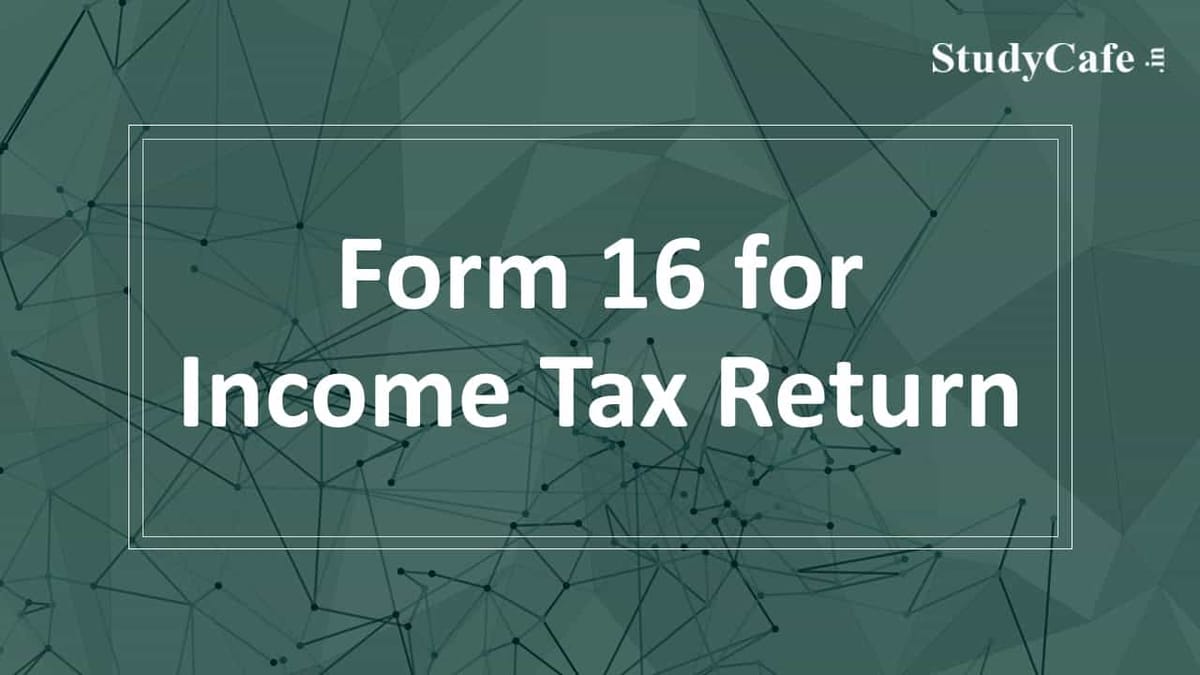How to file Income Tax return if Form 16 is not received?
Deepshikha | Nov 1, 2021 |

How to file Income Tax return if Form 16 is not received?
For salaried personnel, Form 16 is required to file their annual ITR. Salaried employees, on the other hand, can file their taxes even if they don’t have a Form 16.
We’ll look at how a salaried employee can file income tax returns without using Form 16 in this article.
Form 16 is an important document that all employers must provide to their employees. It’s essentially a TDS certificate that lists the taxable income and deductions of the employee. It is a necessary document for employees to use when filing their taxes.
When an employer deducts TDS from salaries, the Income Tax Act requires the employer to issue a TDS certificate once a year, on or before the 15th June of the financial year immediately succeeding the year in which tax is deducted.
Employers may refuse to provide employees with a Form 16 in certain circumstances. Employees whose taxable income does not exceed the basic exemption ceiling are frequently observed not receiving a Form 16 from their employers.
As long as their gross income is above the basic exemption level of Rs 2.5 lakhs, all salaried employees must file their yearly IT returns (and it is permissible to do so even if they do not obtain a Form 16).
Only when TDS has been deducted is a TDS certificate in Form 16 necessary to be supplied to the employee. If your employer has not deducted TDS, he may not provide you a Form 16.
Anyone in charge of paying a salary is expected to withhold tax at the source from the amount owed. According to the Act, anyone who deducts TDS from a payment must provide a TDS certificate with data to the person to whom the payment is made.
An employer is required to provide you with a certificate, in the form of Form 16, stating that tax has been paid to the Central Government, the amount paid, the quarter for which the tax was paid, and other prescribed information.
If your employer fails to give you a Form 16 after deducting TDS, the employer must pay a minimum penalty of Rs 100 for each day the default persists. You can write to the Assessing Officer about your employer’s failure, and the Assessing Officer may take necessary action against the employer, including levying the penalty specified above and initiating additional proceedings.
You can check your TDS details from your Form 26AS; if the details don’t show up, it means your employer deducted TDS from you but didn’t deposit it with the government! In this instance, you may have to pay your tax to the government and then file a claim with your employer.
While the employer is responsible for deducting tax from salaries and giving a TDS certificate in respect of TDS, you are responsible for calculating and paying taxes on your income as well as filing income tax returns. You must pay tax if your total income, including salaries, is greater than the basic tax exemption amount. Whether or whether your employer deducted any tax from you, or even if he fails to provide you a Form 16, you are required to calculate tax and file tax returns.
Salaried taxpayers who haven’t received their Form 16 can file their IT returns by following the guidelines below.
You can always update your return if you receive your Form 16 later from your employer and notice some differences between the return filed and Form 16, but you must do so before 31 January 2022 (due date extended) for the return submitted for FY 2020-21.
In case of any Doubt regarding Membership you can mail us at contact@studycafe.in
Join Studycafe's WhatsApp Group or Telegram Channel for Latest Updates on Government Job, Sarkari Naukri, Private Jobs, Income Tax, GST, Companies Act, Judgements and CA, CS, ICWA, and MUCH MORE!"